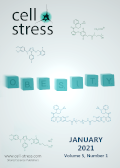Table of contents
Volume 5, Issue 1, pp. 1 - 22, January 2021
Cover: This month in
Cell Stress: Drug development against obesity based on bile acid targets. Image by Anna Tarazevich via
pexels.com. Image modified by
Cell Stress. The cover is published under the
CC BY 4.0 license.
Enlarge issue cover
Improving glucose and lipids metabolism: drug development based on bile acid related targets
Hanchen Shen, Lili Ding, Mehdi Baig, Jingyan Tian, Yang Wang and Wendong Huang
Reviews |
page 1-17 | 10.15698/cst2021.01.239 | Full text | PDF |
Abstract
Bariatric surgery is one of the most effective treatment options for severe obesity and its comorbidities. However, it is a major surgery that poses several side effects and risks which impede its clinical use. Therefore, it is urgent to develop alternative safer pharmacological approaches to mimic bariatric surgery. Recent studies suggest that bile acids are key players in mediating the metabolic benefits of bariatric surgery. Bile acids can function as signaling molecules by targeting bile acid nuclear receptors and membrane receptors, like FXR and TGR5 respectively. In addition, the composition of bile acids is regulated by either the hepatic sterol enzymes such as CYP8B1 or the gut microbiome. These bile acid related targets all play important roles in regulating metabolism. Drug development based on these targets could provide new hope for patients without the risks of surgery and at a lower cost. In this review, we summarize the most updated progress on bile acid related targets and development of small molecules as drug candidates based on these targets.
To promote or inhibit glioma progression, that is the question for IL-33
Stephen M. Robbins and Donna L. Senger
Microreviews |
page 18-22 | 10.15698/cst2021.01.240 | Full text | PDF |
Abstract
IL-33, a member of the IL-1 cytokine family has been shown to play a dual role within the body. First IL-33, similar to other IL-1 family members, is a secreted cytokine that binds to the cell surface receptor ST2 to induce a number of cell signaling pathways. Second, IL-33 enters the nucleus where it binds chromatin and directs transcriptional control of an array of growth factors and cytokines. Consistent with its complex cellular regulation, IL-33 mediates an array of biological functions by acting on a wide range of innate and adaptive immune cells. Recently, we found that IL-33 is expressed in a large number of human glioma patient specimens where its expression within the tumor correlates with the increased presence of Iba+ cells that include both resident microglia and recruited monocyte and macrophages. Strikingly, glioma derived expression of IL-33 correlates with a dramatic decrease in overall survival of tumor-bearing animals and thus supports its role as an influential factor in gliomagenesis. Notably however, when the nuclear localization function of IL-33 is crippled, the tumor microenvironment is programmed to be anti-tumorigenic and results in prolonged overall survival suggesting that when educated appropriately this could represent a novel therapeutic strategy for glioma (De Boeck et al. (2020), Nat Commun, doi: 10.1038/s41467-020-18569-4).



